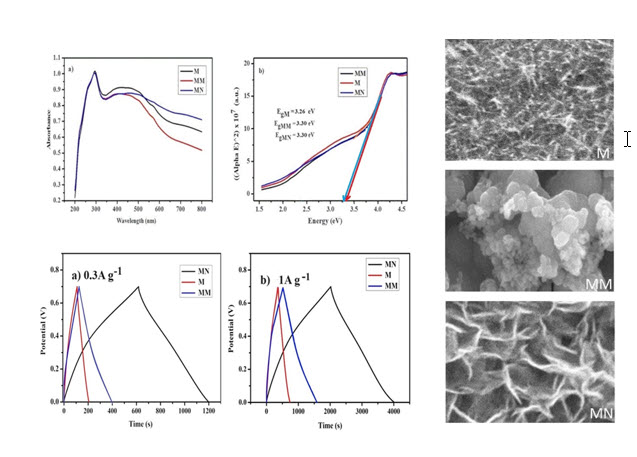Volume 21, Issue 1 (March - Special Issue 2024)
IJMSE 2024, 21(1): 1-10 |
Back to browse issues page
Abstract: (1958 Views)
The trimanganese tetraoxide (Mn3O4) nanostructured thin films doped with 2 mol % of nickel (Ni) and molybdenum (Mo) ions were deposited by a simple electrophoretic deposition technique. The structural, optical, and morphological studies of these doped thin films were compared with pure Mn3O4 thin films. X-ray diffraction (XRD) confirmed the tetragonal Hausmannite spinel structure. The Fourier transform infrared spectroscopy (FTIR) provided information about the molecular composition of the thin films and the presence of specific chemical bonds. The optical study and band gap energy values of all thin films were evaluated by the UV visible spectroscopy technique. The scanning electron microscopy (SEM) illustrated the morphological modifications of the Mn3O4 thin films due to doping of the nickel and molybdenum ions. The Brunauer Emmett Teller (BET) method has confirmed the mesoporous nanostructure and nanopores of the thin films. The supercapacitive performance of the thin films was studied by cyclic voltammetry (CV), and galvanostatic charge discharge (GCD) techniques using the three-electrode arrangement. An aqueous 1M Na2SO4 electrolyte was used for the electrochemical study. The 2 mol % Ni doped Mn3O4 thin film has shown maximum specific capacitance than pure and Mo doped Mn3O4 thin films. Hence, this study proved the validity of the strategy - metal ion doping of Mn3O4 thin films to develop it as a potential candidate for electrode material in the futuristic energy storage and transportation devices.
Type of Study: Research Paper |
Subject:
Composites
| Rights and permissions | |
 |
This work is licensed under a Creative Commons Attribution-NonCommercial 4.0 International License. |




